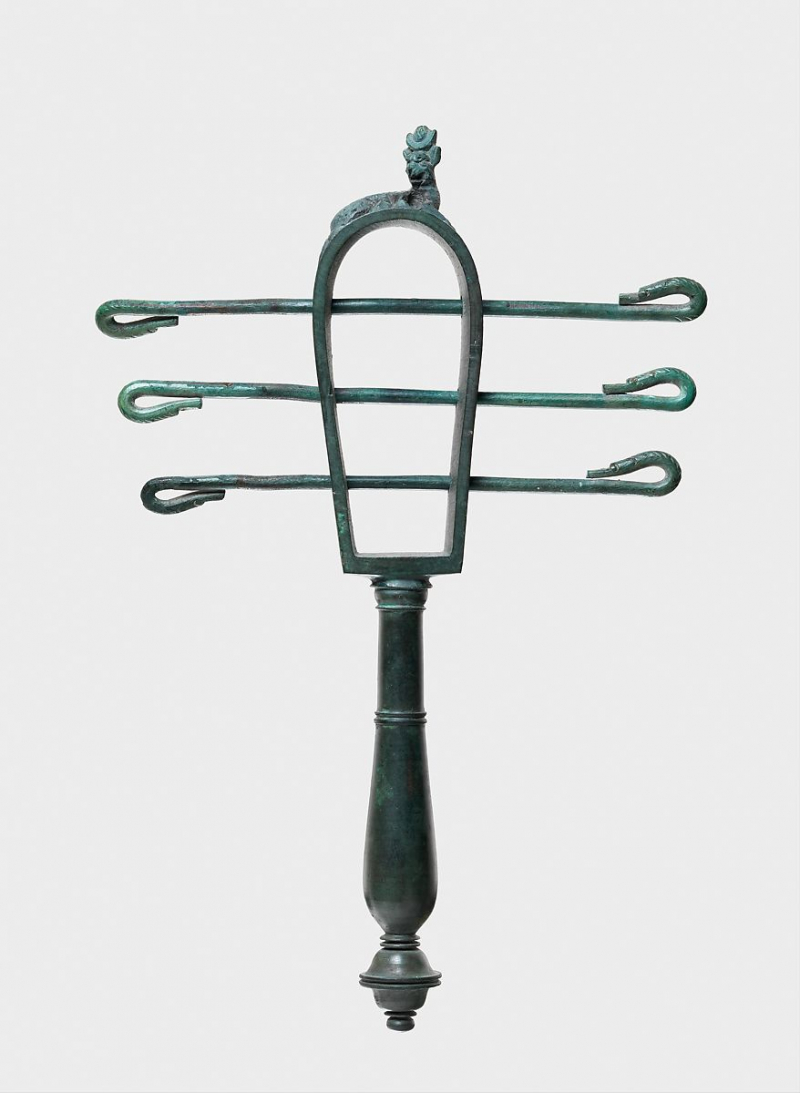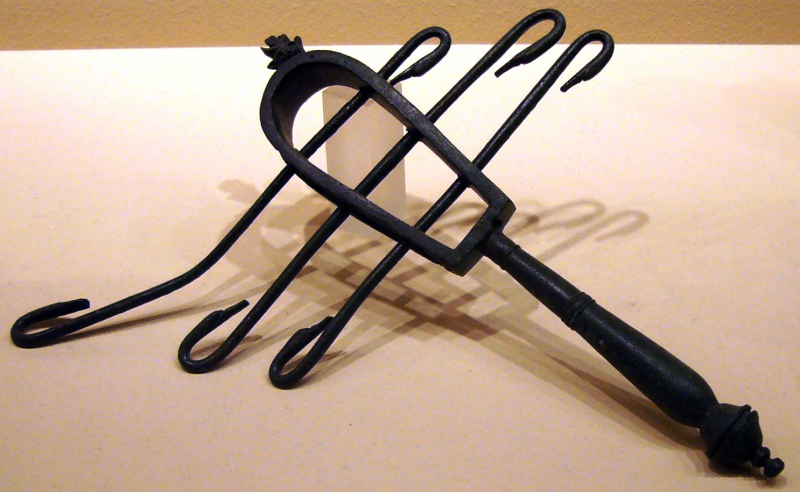Sistrum
A sistrum is a percussion-family musical instrument that is mostly connected to ancient Egypt. It comprises of a handle and a U-shaped metal frame between 30 and 76 cm wide that is made of brass or bronze. Its movable crossbars' tiny rings or loops of thin metal make a sound when shaken that ranges from a faint clank to a loud jangling. Its names were sekhem (sḫm) and sesheshet (sššt) in ancient Egyptian.
In addition to metal, a sistrum could be made of clay, wood, or both. The moveable jingle elements were built along horizontal bars, which served as the instrument's percussion components. A musician rattled the sistrum, which had a handle linked to this structure.
The U-shaped of the sistrum's handle and the frame is perceived as resembling the face and horns of the cow goddess Hathor, and it may have originated in the worship of Bat. It was employed in dances and religious ceremonies, especially in the worship of Hathor. It was also shaken to scare Set away and prevent the Nile from flooding. In Egyptian culture, the mother goddesses Hathor and Isis were the most prominent figures linked with the sistrum. In statues and figures on pottery, musicians are depicted playing the sistrum in ancient artwork.















